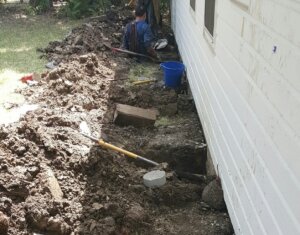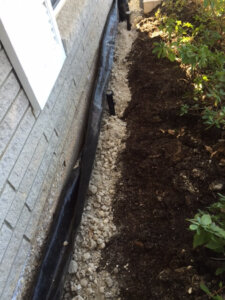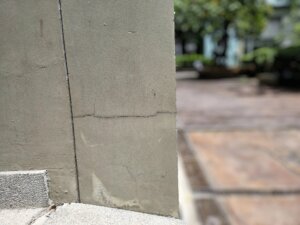Foundation settling is something homeowners may notice as their house starts to age. It’s a natural process that happens to many homes, causing parts of the structure to move slightly over time. The key concern with foundation settling is determining whether it is harmless or a sign of a more serious problem. As the ground… Read More »
French Drain Systems to Protect Your Foundation
Have you ever seen water pooling in your yard after a rainstorm? Perhaps you’ve noticed water running towards your house, which could mean trouble ahead. An uneven lawn can lead to issues like water damage in your basement or damage to your home’s foundation. It’s essential to take action to protect your property from future… Read More »
Don’t Delay Your Foundation Repair: What Happens If You Put It Off?
When it comes to the safety and value of your home, the foundation is key. Many homeowners may not realize the urgency of fixing foundation issues until it’s too late. Small cracks and minor settling might not seem like big problems at first. Delaying repairs on your home’s foundation can lead to serious structural damage… Read More »
How Winter Weather Can Affect Your Foundation and Lead to Repairs
How winter weather affects foundation? The freezing temperatures, snow accumulation, and the freeze-thaw cycle can cause your foundation to settle, shift, or crack. Understanding how winter weather can affect your foundation is key to preventing costly repairs and safeguarding your home. How Does Winter Weather Affect Your Foundation? Winter weather can affect your foundation in… Read More »
Winter Foundation Damage: Signs You Need Foundation Repair Now
Winter can be tough on your home, especially its foundation. Cold temperatures, snow, and ice create problems that can affect the stability of your property. Taking steps to protect your foundation during winter is key to avoiding costly repairs and ensuring the safety of your home. As the ground freezes and thaws, it can shift… Read More »





